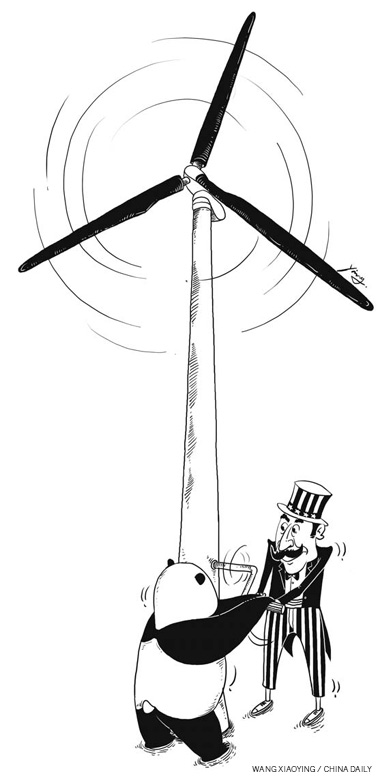Clean energy road to future
As the Year of the Rabbit approaches, President Hu Jintao is preparing to pay his first official state visit to the United States in five years to meet with President Barack Obama. Relations between the two major countries were mixed in 2010, with brighter spots arriving late in the year.

Hu's visit to the US will mark an opportunity to move forward with an enhanced spirit of trust, mutual respect, and cooperation. The US and China share mutual interests and are interdependent in many key sectors. This is especially true when it comes to clean energy and climate change, which offer significant opportunities and benefits for working together.
According to the World Energy Outlook, the renewable energy sector presents a $5.7-trillion global market from 2010 to 2035. The US, a traditional leader in technological innovation, and China, an emerging clean energy innovator, both are well-positioned to take advantage of this market and help lead the world toward a low-carbon future.
The US and China face similar challenges in energy security because of their significant reliance on fossil fuels. In 2009, the US was the world's top oil importer with 9.6 million barrels a day, while China was the second largest with 4.3 million barrels a day. Both countries are also heavily dependent on coal, which is relatively inexpensive but a major driver of greenhouse gases and other pollutants. Together, the US and China consume about 60 percent of the world's coal.
At the same time, China and the US recognize that the pursuit of alternative, cleaner energy choices offer opportunities for enhanced energy security, more innovation, and less pollution. The US government has invested nearly $70 billion in clean and renewable energy through the American Recovery and Reinvestment Act alone. The US Department of Energy has 17 national laboratories across the country, many focusing on clean energy research and development.
The Chinese government has been on an even faster pace of growth, expanding its production and technological advancement in wind and solar power, energy efficiency, transportation and other fields. For example, China will soon have the world's largest high-speed rail network, with railways such as the Beijing-Tianjin and Wuhan-Guangzhou already in operation. The Beijing-Shanghai high-speed line, being built at a cost of $33.3 billion, is scheduled for completion by June 2011.
 0
0 






